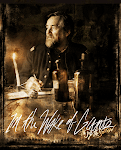 The Demon Under The Microscope: From Battlefields Hospitals to Nazi Labs, Thomas Hager, Broadway Publishing, 352 pages, bibliography, index, source notes, paperback, $15.00.
The Demon Under The Microscope: From Battlefields Hospitals to Nazi Labs, Thomas Hager, Broadway Publishing, 352 pages, bibliography, index, source notes, paperback, $15.00.
Thomas Hager opens Demon Under The Microscope with compelling descriptions of December 7 1941's wounded and those who cared for them. The setting is Tripler General Hospital in Hawaii. Ambulances, trucks, and cars bring the torn, the lacerated, and the roasted to the hospital. When it is filled the lawns of the facility are covered with the injured. The hospital's three operating rooms are in service for nearly a full day. Surprisingly and quite unlike World War One, there is not a single death from infection.
In the first three chapters, Hager weaves stories of battlefield medicine from before the French Revolution through World War One. The science of bacteriology began immediately before and during the First World War in which soldiers living in earthworks and trenches could die and without being wounded. It was a world without antibiotics. In Germany, Gerhard Domagk and his colleagues at Bayer Corporation worked constantly to identify which microscopic bacteria that caused tuberculosis, malaria, and blood poisoning. Discovered in 1932, sulfa became the first of the modern.
 Hager addresses the biology and chemistry of the discovery through the competitive personalities, the national environments, the aggressive international marketplace. Patent wars, lawsuits, dying children of U.S. Presidents, a nearly dead Winston Churchill after the Teheran Conference move the store forward. Research chemists, laboratory mice, and fortunate and unfortunate accidents may be mundane, but not when the Nazi's are looking over shoulders and monitoring research labs. Nazi chieftan Reinhard Heydrich is wounded by Czech assassins and, due to a possible misuse of sulfa, dies. To find out if sulfa was the cause, Ravenbruck concentration camp's laboratory conducts infection and sulfa studies on women prisoners.
Hager addresses the biology and chemistry of the discovery through the competitive personalities, the national environments, the aggressive international marketplace. Patent wars, lawsuits, dying children of U.S. Presidents, a nearly dead Winston Churchill after the Teheran Conference move the store forward. Research chemists, laboratory mice, and fortunate and unfortunate accidents may be mundane, but not when the Nazi's are looking over shoulders and monitoring research labs. Nazi chieftan Reinhard Heydrich is wounded by Czech assassins and, due to a possible misuse of sulfa, dies. To find out if sulfa was the cause, Ravenbruck concentration camp's laboratory conducts infection and sulfa studies on women prisoners.
For those who have seen Saving Private Ryan, recall the episode where the medic is wounded in the assault on the Nazi communication post. His wound was dusted with white powder, a sulfa drug. Demon Under the Microscope is a well paced, personality driven suspense story of scientific discovery. There are no photographs in the books; it would have been enhanced with portraits of the main characters. On the other hand, your mind supplies the visuals from Hager's descriptions.
Second Image Source: The Science Museum, United Kingdom


1 comment:
Very Informative! This blog is great source of information which is very useful for me.
Thank you very much for sharing this!
Microscope Suppliers
Post a Comment